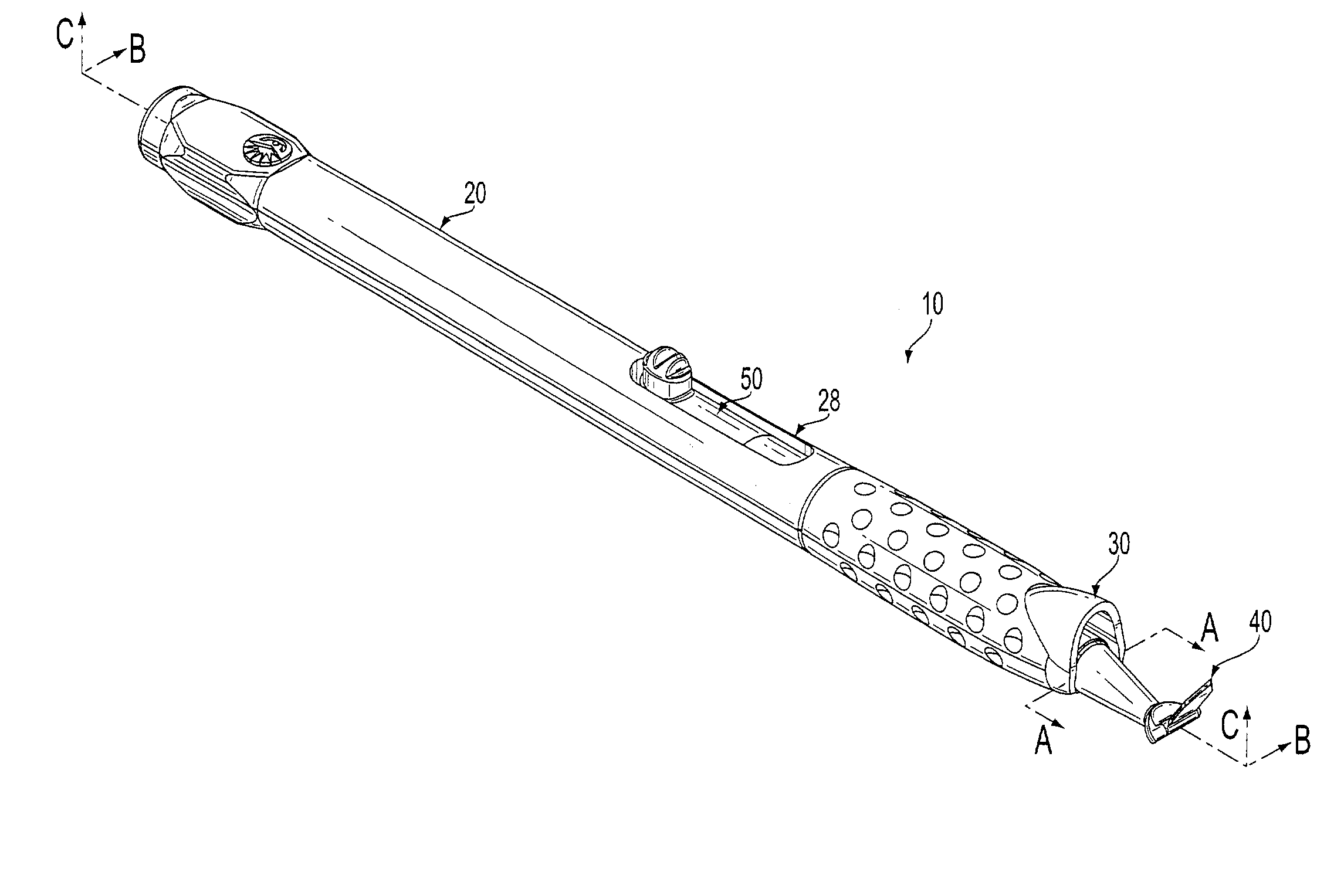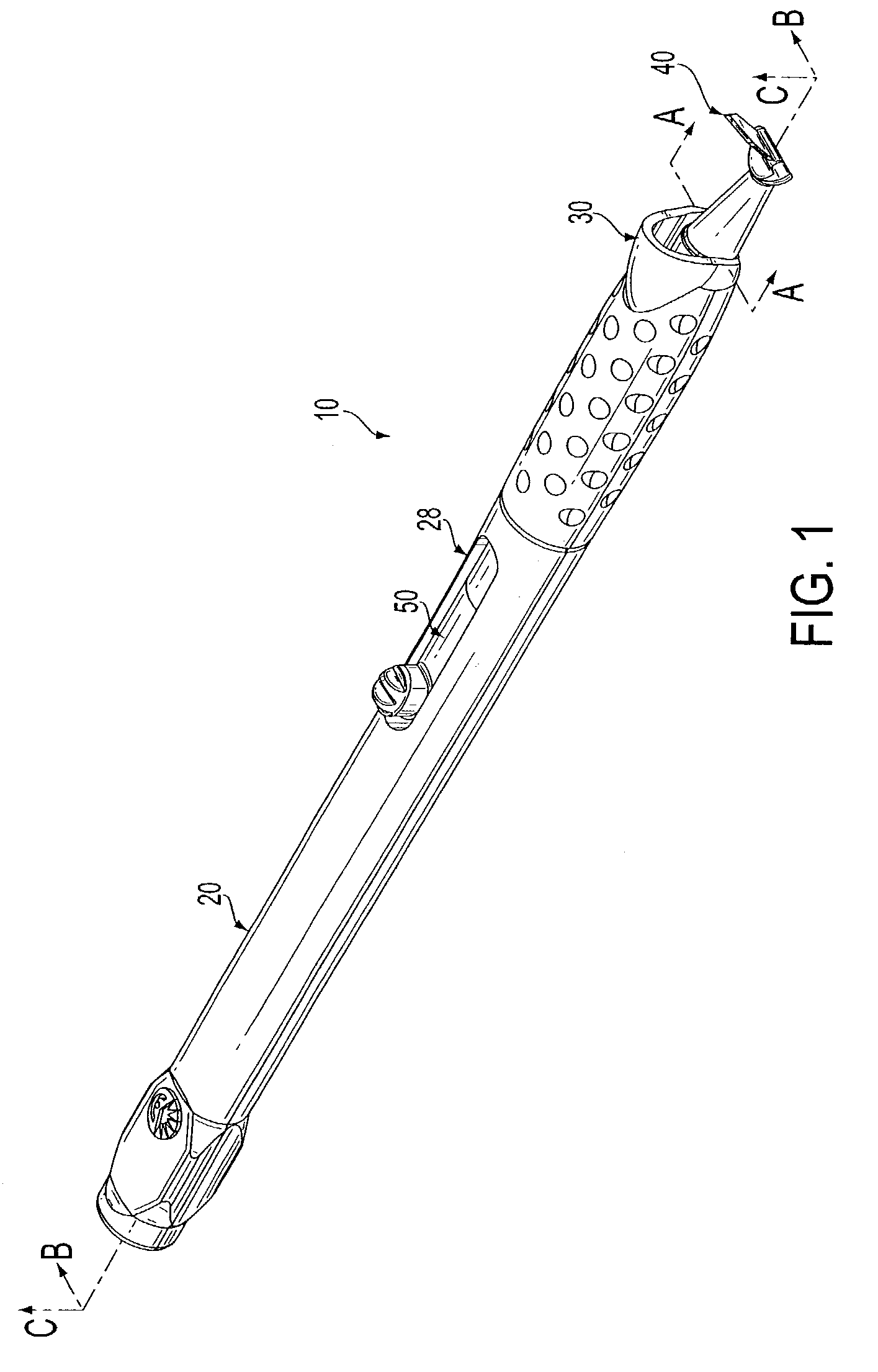Surgical knife safety handle
a knife and handle technology, applied in the field of surgical knife safety handles, can solve the problems of accidental cuts of hospital personnel, blades may be exposed to operating suite personnel, and not paying close attention to scalpels, so as to reduce the chance of cuts or nicks during handling or disposal.
- Summary
- Abstract
- Description
- Claims
- Application Information
AI Technical Summary
Benefits of technology
Problems solved by technology
Method used
Image
Examples
first embodiment
[0048]In the present invention, the guard 30 does not have a fully circular cross section at the distal end due to the molded attachment of the holder 26 to the lower body contour wall 24. This feature ensures the user is allowed to firmly grip a surface that is singularly molded with the blade holder 26. This presents a more positive grip which is less susceptible to unwanted blade or gripping surface movements due to tolerances between the guard 30 and each body contour wall 22 and 24. The expanded distal end of the guard 30 which remains external to the body 20 when fully retracted however, is rigid enough to provide additional control and blade orientation with one or more fingers of the user if so desired during use.
[0049]FIGS. 5A–5E, 6 and 7 show additional details of the guard positioning mechanism 50 and the guard 30. FIG. 5A illustrates the engagement between the guard positioning mechanism and the guard, and FIGS. 6 and 7 illustrate an enlarged cross-sectional view of the ...
second embodiment
[0064]FIG. 10 is an exploded perspective view of the present invention. The view of FIG. 10 includes a first and second body contour wall 122 and 124, formed to assemble as a handle body 120 and define a substantially hollow chamber within the body 120 to house a concealable portion of the guard 130. The first and second body contour walls 122 and 124 each provide a recess, which when assembled, creates a slot 128 extending rearward from the distal end and accessing the chamber to allow protrusion of a raised operator control 158 for the guard 130. The distal end of the first and second body contour wall 122 and 124 also includes an outer surface having a dimpled texture, extending from the distal end to a point slightly before the midpoint of the access slot 128. Additionally, as shown FIGS. 8 and 9, the outer circumference surface area of an exposed portion of guard 130 also includes a dimpled texture, such that when fully retracted, the dimpled texture surface area is unbroken ab...
PUM
 Login to View More
Login to View More Abstract
Description
Claims
Application Information
 Login to View More
Login to View More - R&D
- Intellectual Property
- Life Sciences
- Materials
- Tech Scout
- Unparalleled Data Quality
- Higher Quality Content
- 60% Fewer Hallucinations
Browse by: Latest US Patents, China's latest patents, Technical Efficacy Thesaurus, Application Domain, Technology Topic, Popular Technical Reports.
© 2025 PatSnap. All rights reserved.Legal|Privacy policy|Modern Slavery Act Transparency Statement|Sitemap|About US| Contact US: help@patsnap.com



